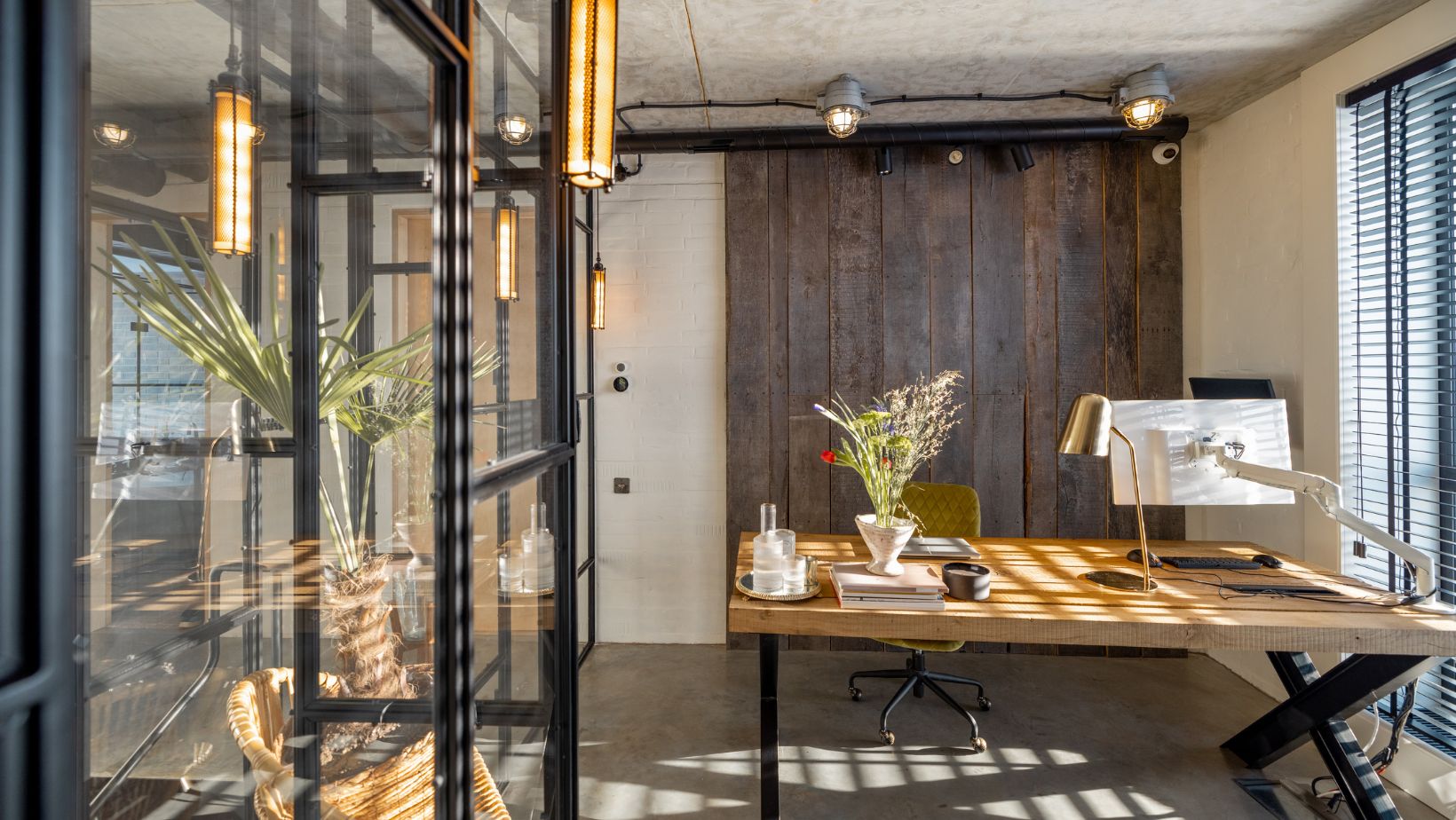A well-designed home office can significantly enhance productivity. By focusing on key elements like ergonomics, lighting, technology, greenery, and acoustics, you can create an efficient workspace tailored to your needs.
So, dive into these strategies to transform your home office into a hub of creativity and efficiency.
Leverage Ergonomics
Creating a productive home office begins with ergonomics. Consider your chair and desk first. Choose an adjustable chair that supports your spine, keeping your feet flat on the floor. Your desk should allow for a 90-degree angle at the elbows when typing.
Invest in a monitor stand to keep your screen at eye level, reducing neck strain. An ergonomic keyboard and mouse can prevent wrist pain over long hours. And don’t forget to take regular breaks to stretch and move around – your body will thank you!
Ergonomic comfort transforms not just how you feel physically but also boosts mental clarity and efficiency throughout the day, thus enabling maximum productivity.
Integrate Biophilic Design Elements
Adding plants to your home office doesn’t just improve aesthetics – it also boosts productivity. Research indicates that incorporating greenery can reduce stress, enhance mood, and increase focus. Choose low-maintenance plants like succulents or snake plants for easy care.

Biophilic design extends beyond just adding plants; consider natural materials like wooden desks or stone accents to bring the outside in. If space allows, a small indoor water feature can create a calming background noise.
These elements help create a serene work environment that fosters creativity and concentration, ensuring you stay productive throughout the day.
Optimize Natural Light and Artificial Lighting Solutions
Natural light plays a crucial role in maintaining productivity. Position your desk near windows to take advantage of daylight, which reduces eye strain and boosts mood. Use sheer curtains to diffuse harsh sunlight without blocking it completely.
When natural light isn’t enough, invest in quality artificial lighting. LED desk lamps with adjustable brightness can mimic daylight and reduce glare on screens.
Balanced lighting minimizes fatigue, keeps energy levels high, and helps you maintain focus longer. So, a well-lit workspace is key to sustaining productivity from morning till night.
Include Acoustic Solutions for Noise Reduction
A quiet workspace is essential for maintaining productivity. Use noise-canceling headphones to block out distracting sounds. And add acoustic panels on walls and ceilings to absorb noise and create a serene environment.
Consider white noise machines or apps that provide consistent background sounds to drown out interruptions. Thick rugs, heavy curtains, and upholstered furniture can also help muffle sound within your home office.

These acoustic solutions prevent disruptions from breaking your concentration, allowing you to stay focused on tasks longer and work more efficiently in a peaceful setting.
Incorporate Technology to Streamline Workflows
Modern technology offers myriad tools to enhance productivity in your home office. Start with a reliable internet connection; consider upgrading to fiber-optic if available.
Dual monitors can significantly improve multitasking capabilities, making it easier to reference multiple documents or tasks simultaneously. Voice-activated assistants like Alexa or Google Home streamline routine tasks. For instance, you can set reminders, control lighting, and even play focus-enhancing music hands-free.
Also, use software like Trello for project management and Slack for team communication. And an external hard drive ensures data backups are quick and easy.
Even invoice templates in Excel format can help speed up invoicing processes and, in turn, maximize productivity. Embrace these tech solutions for a seamless workflow that keeps you efficient and connected.
The Bottom Line
Designing a productive home office involves thoughtful choices in ergonomics, lighting, technology, biophilic design, and acoustics. These elements together create a workspace that fosters comfort, focus, and efficiency.
So, implement these strategies to transform your home office into an environment where you can thrive professionally every day.


More Stories
Health and Wellness Architecture: How Design Shapes Human Wellbeing
Transforming Your Living Room: A Comprehensive Home Renovation Guide
What to Know Before Building a New Home in Santa Cruz, CA